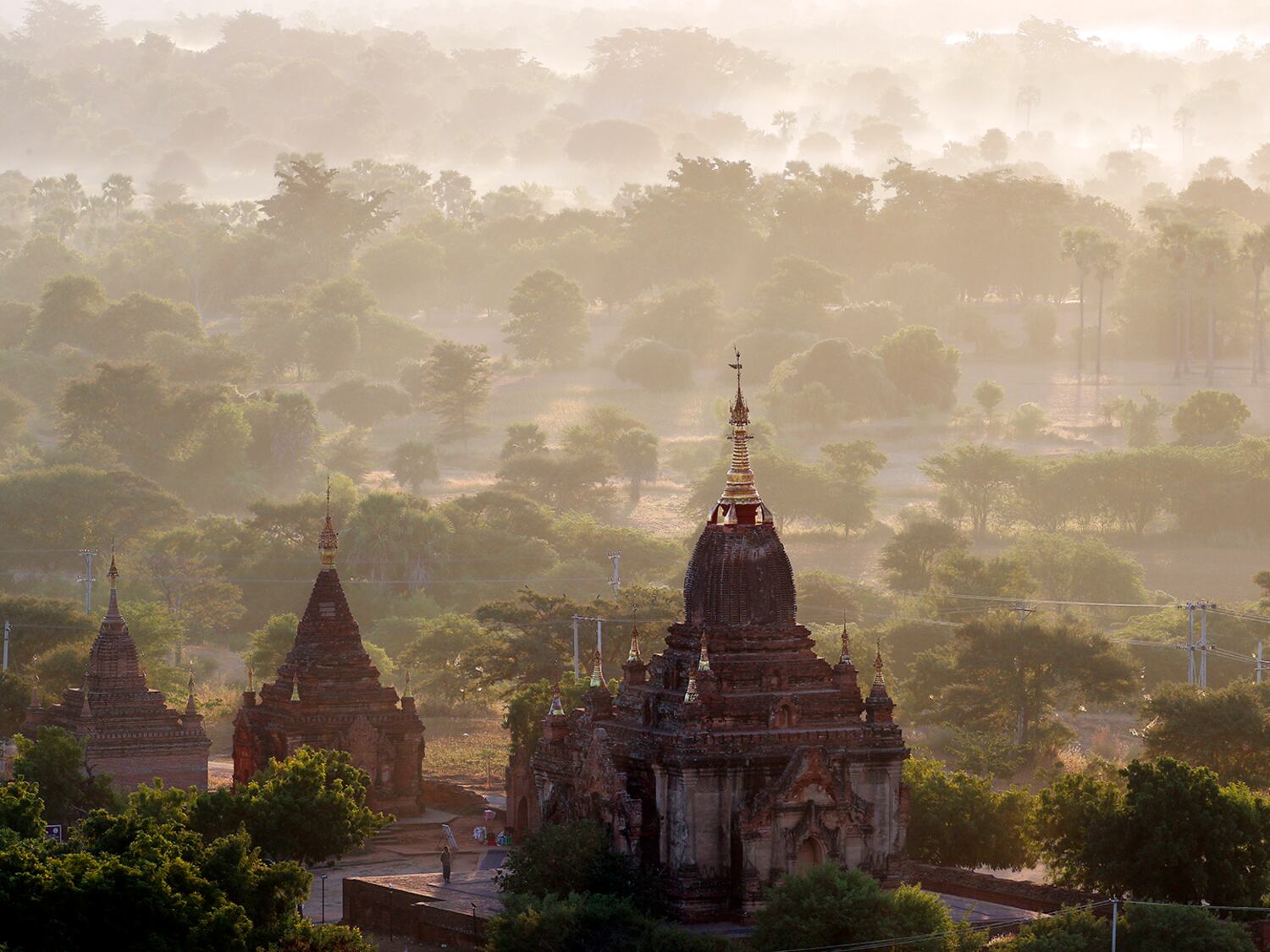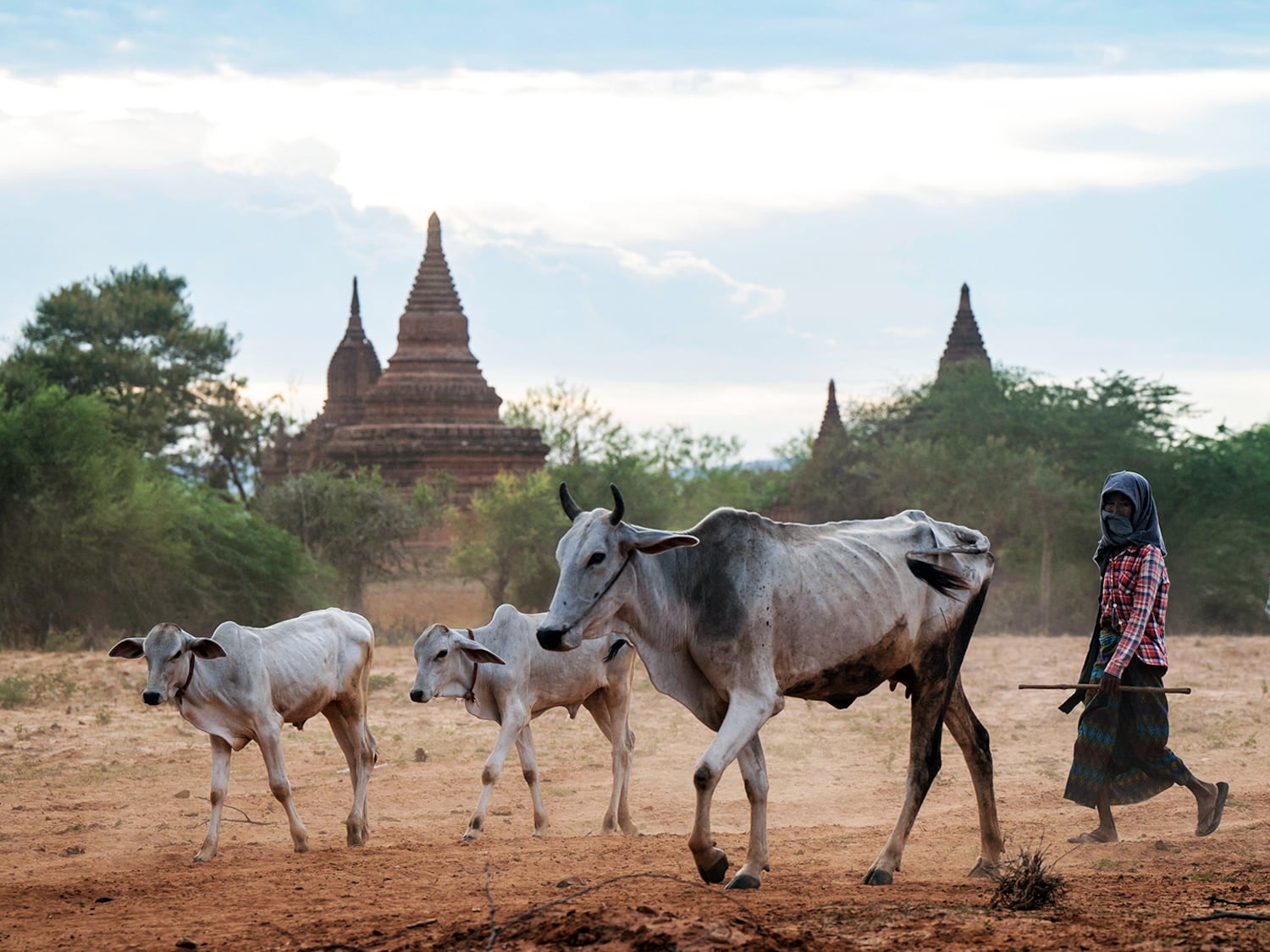Landowners restrict public access to hundreds of religious sites in Myanmar’s Bagan
With little oversight, it’s unclear whether the monuments are being regularly maintained.

Read RFA coverage of this topic in Burmese.
Around 400 ancient religious monuments in Myanmar’s U.N.-designated World Heritage Site of Bagan are located on privately-held land, according to residents, who say access is restricted and maintenance is unregulated.
The monuments — which include pagodas, stupas and temples — are on the property of private businesses and state-owned agencies, away from public view and oversight, the residents told RFA Burmese, speaking on condition of anonymity due to fear of reprisals.
A resident of Mandalay region’s Nyaung-U township, located about 4 kilometers (2.5 miles) from old Bagan, said that without easy access to the monuments, it’s unclear whether they are being properly maintained.
The Eden Group, which is developing a hotel, owns land with at least 24 temples, including the Agga Tae and Paungku temples, the resident said.
“The fenced-in sections have never been fully protected,” he said, and it isn’t easy for the public to get access to the compounds.

In Loka Nanda National Park, which is designated as Forest Department land, there are six pagodas, while another three are located on the grounds of the Ayeyarwady Hotel, three on the property of the Bagan Hotel, and one on land owned by the Thande Hotel.
Several temples are located on the property of private hotels such as Nan Myint Tower, Aureum Palace Hotel, Treasure Hotel, Treasure Palm Garden, Thazin Garden Hotel, and Umbra Hotel. Other temples can be found within the compounds of the Nyaung U Township Court and the Agricultural Department.
UNESCO designation
The United Nations Educational, Scientific and Cultural Organization, or UNESCO, designated Bagan a World Heritage Site in 2019, citing its cultural significance.
But much of Bagan’s preservation oversight fell away after the 2021 coup when teams from France, South Korea and Japan withdrew.
The city was the seat of the Bagan Kingdom which, at its height, ruled the region between the 11th and 13th century. It is home to more than 3,000 monuments that reflect the Buddhist cultural tradition of merit-making, and are decorated with murals and statutes.
UNESCO lists “buildings and development” — including “major visitor accommodation and associated infrastructure” — and “social/cultural uses of heritage” — such as “impacts of tourism/visitor/recreation” — among its 14 primary threats to World Heritage Sites. There is no requirement that sites be accessible to the public.
RELATED STORIES
Archaeologist: Some 1,900 pagodas at Myanmar’s Bagan in need of repair
Construction in ancient city of Bagan goes unchecked under junta
Business bad for Bagan’s buggy drivers as pandemic and coup keep tourists away
A Bagan resident expressed frustration that members of the public are only allowed to enter the grounds of monuments located on private land during pagoda festival days.
“You can’t enter them whenever you want,” the resident said.
A taxi driver noted that it’s “inconvenient to enter other people’s property” to visit the sites.
“We don’t have to seek permission to visit the Ananda pagoda and Thar Mani brick monastery in public areas,” he said. “It’s inconvenient for us to ask, ‘please let us visit the pagodas.’”
Development and maintenance
The Eden Group is developing a high-end hotel that was approved by former junta leader Senior Gen. Than Shwe in 1995. It’s located between the banks of the Ayeyarwady river to the west and the road from Nyaung-U to Bagan to the east.
In the project zone, which is where several ancient pagodas are located, excavators are digging and workers are laying concrete foundations at depths of 3-6 meters (10-20 feet) for constructing buildings.
Residents reported that the group’s projects were suspended following a recent visit by current junta chief Senior General Min Aung Hlaing.
A source close to the Department of Archaeology and National Museum said that the pagodas are being repaired and maintained.
“When necessary, we carry out maintenance,” the source said, noting that workers use chemicals to kill trees that grow on top of the monuments. “As for the pagodas in private compounds, we have the right to maintain all these monuments.”
The source went on to say that laws, rules and regulations have been enacted to prohibit the construction of buildings near the pagoda area, including high-rise buildings.
Nyi Mon, director of the Department of Archaeology and National Museum (Bagan), confirmed that officials from his agency are “constantly inspecting pagodas in the hotel compounds to ensure that preservation work is unaffected.”
He dismissed claims that monuments located within hotel compounds are inaccessible to the public, and said that maintenance is regularly carried out on the sites “with international technology and advice.”
‘As if they belong to someone’
But a resident of Bagan pointed out that many of the sites lie behind locked gates, “as if they belong to someone.”
“Vinyl sticker sign boards outside display the pagoda’s code number, name, and the maximum number of visitors allowed at a time,” he said. “However, the temples remain locked, and only archaeological staff are authorized to hold the keys.”
“Since these heritage sites are managed by the private sector, concerns have been raised about their authenticity and credibility,” he added.

Myanmar’s prior military regime forcibly evicted residents of Bagan to the so-called “New Bagan City” during the 1990s under the pretext that their homes were located within cultural heritage sites.
Nonetheless, ancient pagodas of great historic value still exist on land owned by prominent businessmen and state agencies.
Translated by Aung Naing. Edited by Joshua Lipes and Malcolm Foster.
This article has been sourced from various publicly available news platforms around the world. All intellectual property rights remain with the original publishers and authors. Unshared News does not claim ownership of the content and provides it solely for informational and educational purposes voluntarily. If you are the rightful owner and believe this content has been used improperly, please contact us for prompt removal or correction.












